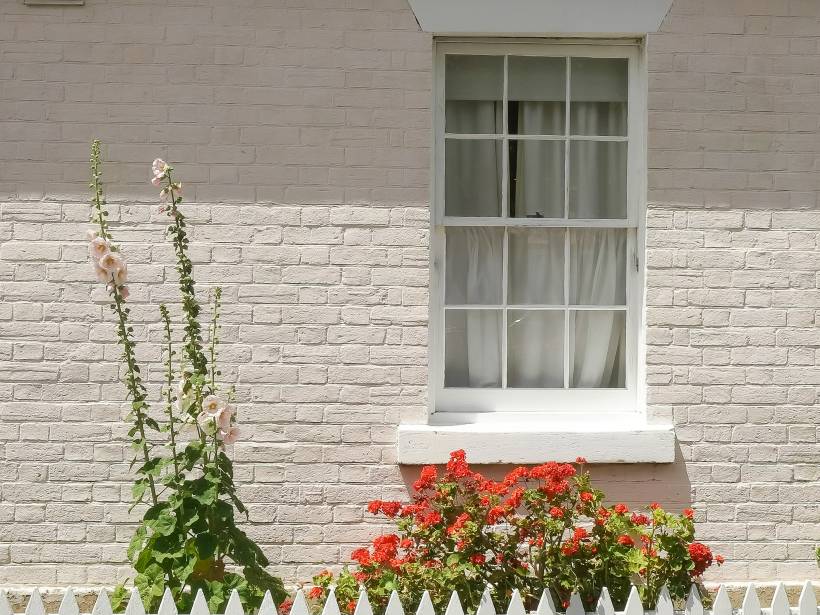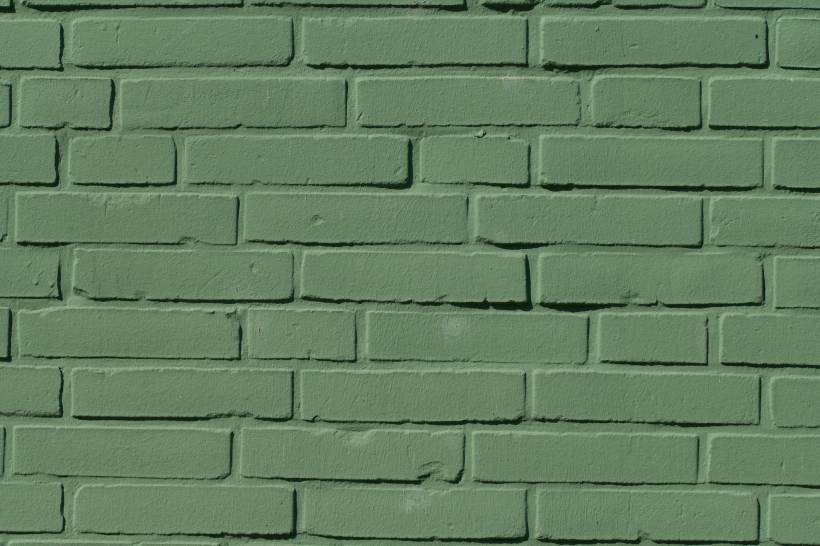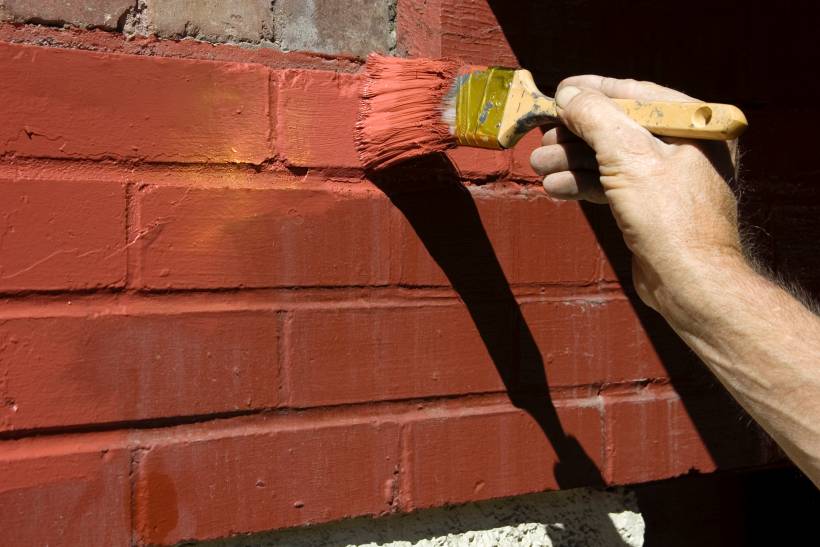Did you know that the use of limewash paint dates back to Roman times? This paint type and finish isn’t a recent trend but has been around for millennia thanks to its readily available ingredients, earthy tones, and ease of application.
If you’re planning a home renovation and want to use lime paint, this post has you covered. We’ll tackle the basics of limewash paint, its advantages, and even tips for applying it yourself or hiring a professional paint company to do it for you.
What is limewash paint?
Limewash paint was one of the first-ever house paints, dating back to Roman times. It’s made from crushed and burned limestone mixed with water. This paste is aged, thinned with water, then coloured using pigments. The resulting paint is chalky in texture and leaves a soft, matte finish with a unique depth and earthy feel.
Unlike typical gloss or latex paints that just sit on the surface, limewash paints penetrate and bond with the material underneath. This is what gives limewashed walls their unique look and subtle texture.
Another feature that makes limewash paint different is how it ages. Instead of fading or chipping, it calcifies and turns into a patina on the painted surface. If this is to your taste, then limewashing is for you.
Colour options
Lime-based paints typically come in earthy colours like whites, browns, and greys that use natural pigments. The traditional lime wash itself (without pigments) is an off-white tone. You can get other colours, too, such as pinks, blues, and greens, but these may cost more than the usual shades. This is perfect if you’re considering two-toned walls for your home.
When choosing lime paint colour for your walls, remember that it lightens significantly as it dries. It’s best to consult a colour consultant and test different shades and tints before committing.
Advantages of using limewash paint

Limewash paint is a popular choice among painters and homeowners for many reasons, including their appearance/finish, environmental friendliness, and more!
- Reliability – As mentioned earlier, limewash paint was one of the very first house paints, and it’s still made and used today, proving its enduring quality and reliability.
- Natural-looking appearance and versatility – Limewash paint’s soft tone variations add depth and visual interest to any wall or surface. You can opt for a more translucent look with just one coat or have more opaque, matte-finished walls by using three or more coats.
- Wide colour range – They typically come in earthy tones, but you can also find limewash paint in your chosen colours.
- Ease of use – Lime paint can be used even by DIYers! It’s readily available, and you can learn to apply it fairly quickly. Note that for best results, you may want to apply multiple coats, which requires a bit of waiting time.
- Environmental friendliness – Typical lime paints are free from volatile organic compounds (VOCs), which are chemicals that can negatively affect agriculture, air quality, and health. This makes limewash an eco-friendly choice for your home renovation project.
- Health benefits – Unlike regular paint, limewash has low odour, meaning you don’t have to worry about how to deal with paint fumes. Since lime has a high pH level and allows moisture to evaporate, it may also inhibit harmful allergens, mould, and odours. This means lime paint may improve your home’s air quality!
- Durability – Limewash paints are durable, lasting around 5-10 years. Limewash that’s formulated for exteriors are also quite resistant to weather, UV rays, and regular wear and tear.
Where can I use limewash paint?
Limewash paint is suitable for both interior and exterior use. It works best on porous surfaces such as plaster, drywall, brick, masonry, and even previously painted surfaces.
Do note that exterior limewash paint has a unique formulation that’s weather-resistant, so check the label before you buy!
Indoors, limewash can typically be used on any surface or room. The paint’s breathable nature makes it a good choice for avoiding mould and unsightly paint peeling.
Applying limewash paint

Now that you’ve got your paint picked out, let’s go through the things you’ll need before you paint a wall using limewash. Of course, if you choose to skip the DIY route, you can read these in preparation for hiring a professional painting company to do the work for you.
To prime or not to prime?
One of the many advantages of using lime paint is that you won’t typically need to prime your walls since the paint penetrates the material versus just sitting on the surface. This includes brick, plaster, unpainted masonry surfaces, and more.
Given this, it’s best to clean the surface with a damp rag simply. Then, allow it to dry before you paint.
If you choose to prime to improve the surface, you may use a mineral-based primer. These are typically low-VOC, just like lime paint. Priming is also ideal for surfaces with previous coatings, so you can start with a fresh canvas.
Limewash painting techniques
Limewash is pretty forgiving as a medium.You can use a brush, roller, or sponge and still get a beautiful effect on the entire wall.
To start, use a sponge to “cut” or paint the borders of the wall. This helps you get into those nooks and crannies without leaving gaps.
Then, get a block brush or roller and load it with a thin layer of paint. Position it in the middle of the wall, and then brush or roll it outwards. Vary the size and direction of your brush strokes—you can even paint in curves. This helps create that natural-looking “cloud” effect you often see when looking up limewashed walls. Keep layers thin to speed up drying.
Wait until the paint is dry before evaluating if you want another coat. Drying can take a few hours. Remember: lime wash lightens as it dries, so don’t fret if the pigment is too dark at first. If you want a more luminous, natural vibe, one to two coats of paint will do, while three coats will result in a more matte, opaque look.
Some tips:
- You can add casein to your limewash paint to improve surface adhesion.
- You can add raw linseed oil to the paint used in your kitchen or bathroom. This is because the oil helps the paint stay durable in wet conditions.
Sealing and clean-up
Generally, lime paint requires no sealing or special finishing. However, some homeowners may add wax on top of the paint for extra protection. If you think this is for you, choose a sealant that doesn’t trap moisture. This defeats the moisture-wicking, breathable surface of limewash paint! Moisture in your walls will also result in problems like peeling and mould.
Once you’re happy with your paint job, simply clean up any spills with warm, soapy water and a sponge. Cleaning up your brushes and rollers after limewashing is easy, too. Just submerge them in a bucket until most of the paint comes out, then run them under the tap and shake the water off.
Unlike other types of paint, lime wash paint is rather easy to apply, but you can definitely opt to hire a painter instead of doing it all yourself.
Limewash paint maintenance and durability

Limewash is one of the more durable types of paint, lasting between 5-10 years with proper care. The keyword is proper care, and here’s how you can do it.
- Limewash surfaces are delicate and can get easily damaged by abrasive cleaning techniques, so it’s best to avoid using harsh chemicals and get aggressive when cleaning. However, you can spruce them up with some light vacuuming and gentle wiping using a soft, damp cloth.
- If you notice your surfaces fading or weathering, simply mix up some limewash paint, reapply, and then wait for it to dry to restore its appearance. Just ensure to prep the surface before applying a new coat.
- Generally, limewash paint surfaces last 5–10 years. But if you see weathered surfaces, you can repaint them as needed. You can do this yourself or hire a painting contractor to assist you.
Paint colour and ageing effects
Limewash paint’s natural, old-world look is classic and timeless—you may even find it looks better with time! This makes it a favourite choice for updating bedroom walls and exterior surfaces.
Because it is made of lime, the paint will interact with the elements and calcify over time, producing a soft, weathered patina. This makes it different from regular paint, which chips or fades with age. Some paint manufacturers offer mineral sprays or sealants to slow down the ageing. But you could also embrace this as part of the charm of limewash paint.
What are some tips for hiring a limestone wash painting contractor?
How do you hire a skilled painting contractor for your limewash project? Here are a few tips:
- Verify their experience: Make sure they have sufficient experience in working with the type of surface you plan to have painted with limewash, whether it’s interior or exterior walls, brick walls, plaster or other types.
- Check their previous limewash painting work: Ask to see photos of their previous projects to check if they can execute your goal. This will help you evaluate their ability to execute the desired look and ensure their familiarity with the nuances of the limewash application.
- Inquire about any additives or materials: Ask about additives or materials that can enhance the durability of the limewash finish. For example, ask about the use of primers or sealants that can improve adhesion and protect the painted surface.
Breathe new life into your interior spaces with lime paint!
If you’ve read this far, you’re ready to bring the unique look of limewash paint to your home. Even better, you’re now acquainted with its other advantages, from eco-friendliness to the soft, weathered patina it gets over time.
Painting with traditional lime wash is easy and fuss-free, but hiring a pro painter near you can be hassle-free, too. Oneflare helps you get in touch with experienced limewash paint pros to help you out with this paint project.
FAQs on limewash paint
What are the disadvantages of limewash paint?
Limewash has limited stain and water resistance. Any spills or splashes will leave marks and may require frequent touch-ups. Additives like linseed oil may help increase water resistance.
Frequent maintenance and touch-ups are also required. Since limewash is porous, exposure to the elements will result in gradual ageing. You can embrace this natural process or do touch-ups with more limewash paint and mineral sprays.
Why is limewash paint so expensive?
Limewash paint is typically more affordable versus other types of paint, but the application process can drive up the cost of painting jobs. This is because lime paint takes longer to dry and your desired look may take more than one coat of paint.
You can reduce costs by doing the limewash painting yourself or learning how to hire a painting contractor who is cost-effective yet gets the job done well.
Does limewash paint rub off?
Traditional lime wash may rub off if the surface isn’t prepared properly. Also, since it is water-based, you might find that trying to clean a limewashed wall with water will result in paint rubbing off.
Can you limewash on top of paint, stone, or brick?
Limewash can be used on porous surfaces, including paint, stone, brick, cement, masonry, and even previously painted surfaces. Consider limewash the next time you repaint a wall or decorate a home extension.








